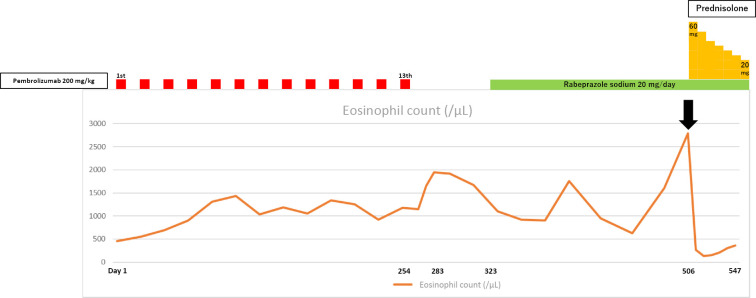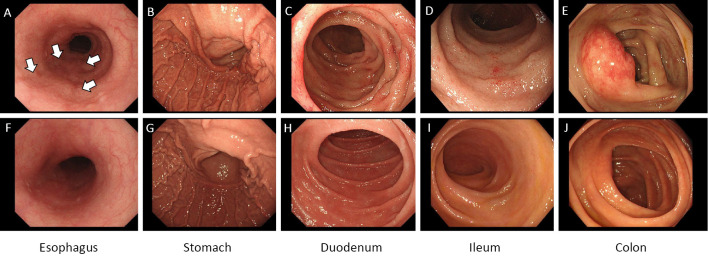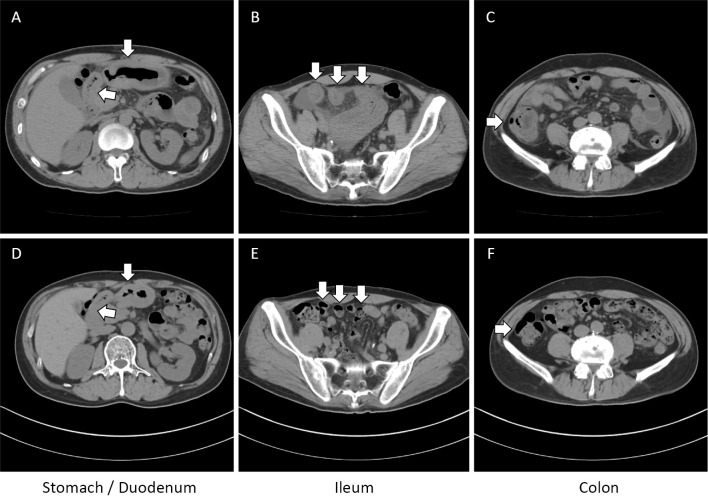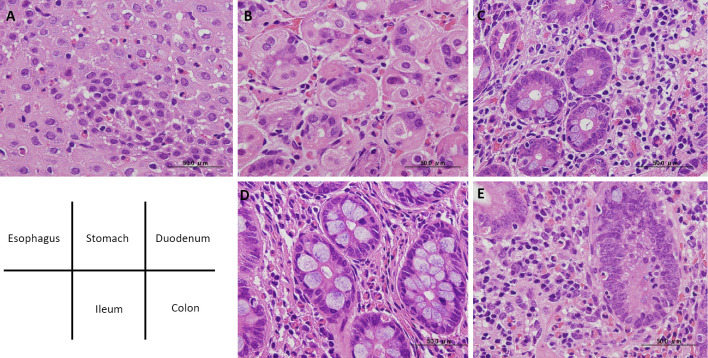A 46-year-old man was diagnosed with unresectable stage IV non-small-cell lung cancer. He was receiving pembrolizumab at 200 mg/kg at 3-week intervals. After the 13th dose on day 254, he developed symptoms of pharyngeal discomfort, choking sensation, and diarrhea and showed an increased peripheral eosinophil count. Pembrolizumab administration was therefore discontinued after day 254. On referral to our hospital on day 283, esophagogastroduodenoscopy and colonoscopy showed no obvious inflammatory changes. However, we diagnosed him with immune checkpoint inhibitor (ICPI)-related eosinophilic gastrointestinal disorders (EGID) due to the presence of esophageal eosinophilic infiltration. His symptoms of pharyngeal discomfort and choking sensation were temporarily relieved after starting rabeprazole on day 323, but the patient reported symptoms of abdominal pain and diarrhea on day 506, in addition to recurrence of pharyngeal discomfort and a choking sensation, and his eosinophil count rose again (Picture 1; arrow). A re-examination showed mild furrows in the esophagus (Picture 2A; arrows), erythema and edema in the gastrointestinal tract from stomach to colon (Picture 2B-E, 3A-C; arrows) and eosinophilic infiltration throughout the gastrointestinal tract (Picture 4A-E). We therefore diagnosed him with recurrent ICPI-EGID attributed to the prolonged pharmacological action of pembrolizumab. After administering prednisolone at 60 mg/day, the eosinophil count decreased, and the mild furrows, erythema and edema all improved (Picture 2F-J, 3D-F; arrows). This patient was thought to have developed secondary hypereosinophilic syndrome (HES) (1) as an immune-related adverse event caused by anti-PD-1 antibody. In addition, the gastrointestinal organ disease name for secondary HES in this case was ICPI-EGID. Since ICPI-EGID is very rare, we report this case here.
Picture 1.
Picture 2.
Picture 3.
Picture 4.
The authors state that they have no Conflict of Interest (COI).
References
- 1.Valent P, Klion AD, Horny HP, et al. Contemporary consensus proposal on criteria and classification of eosinophilic disorders and related syndromes. J Allergy Clin Immunol 130: 607-612, 2012. [DOI] [PMC free article] [PubMed] [Google Scholar]






